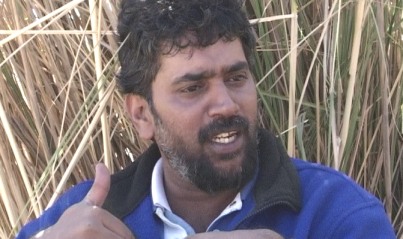And I hear that the fighter are profesional.
Actually
it is a very big country and we have very very different states with
very different cultures and languages and everything, because India is
only united by maybe religion and all these people.. kings, like
Ashok and mythology and all that.. so we have got a representation
of fighters, because, it is from India - like buddhism also - the
martial arts also went form India, so we have the original of the
martial arts people.. thatís the Kalari (martial art people from
Karala), like the Paiko from Orissa and the Manipuri Assamese, you know.
So we have all these kind of different regions, because the whole film
has also folk arts of there places, the songs of the places, so they are
all combined together to give a broader picture.
So we have people, and even people who work in the film, from all over
the states, some of then donít even understand Hindi.
Itís more than a training, itís more like a devotion to the arts,
because their parents would have been involved in it, so they started
learning it, so it has become a tradition and they are trying to keep up
the tradition of their family. Itís like that in most of there things,
specially when it has do to with art forms, because the whole idea of
arts is derived from devotion, because the songs are done for devotion
and everything is done for devotion. So we have a saying, where you have
these traditional arts performed: you donít need an audience you just
need a flame, you know. So itís a devotion most of it, so it can be to
a praise of god, and it can be done alone also.. so these people have
kept it alive and today everyone is very particular of maintaining our
culture.. so I think more and more is done to uplift that.. so I think
it is very interesting when you put all that in a film, which is not
very seldom done, so we are trying to integrate all that going together
in the film |

